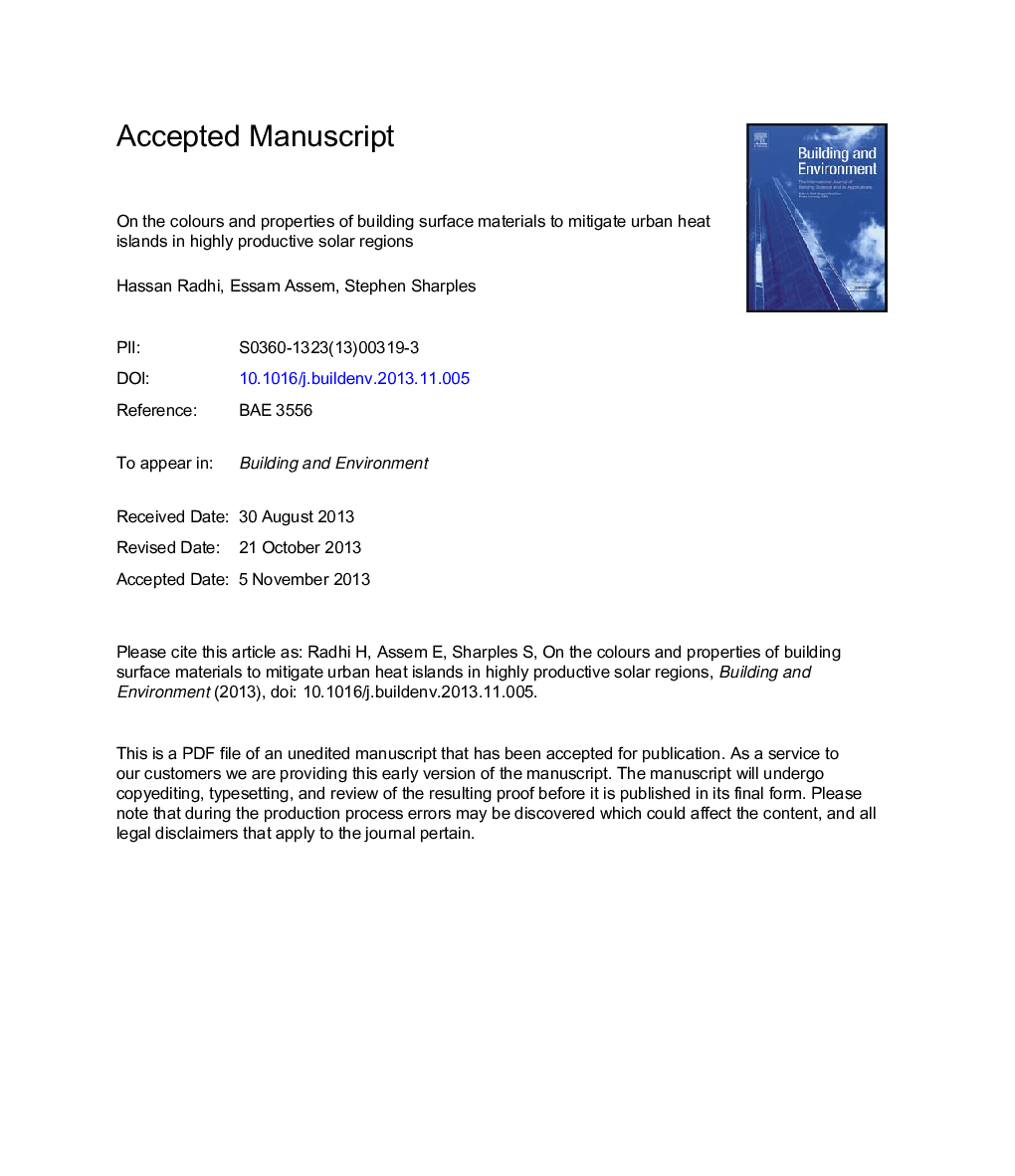| Article ID | Journal | Published Year | Pages | File Type |
|---|---|---|---|---|
| 6700562 | Building and Environment | 2014 | 41 Pages |
Abstract
An experimental study was conducted to assess the impact of building surface materials on urban heat islands (UHI) in highly productive solar regions. The study involved 32 surface materials commonly used in Bahrain and was performed during the summer period. The current work focuses on finishing materials at horizontal surfaces and examines the influence of material thermophysical and solar properties on their surface temperatures (Ts) and surface air temperatures (Ta) under clear sky conditions. A twofold assessment was deployed: first, experimental measurements of horizontal sample materials exposed to solar irradiation on a flat roof, and the second assessment involved full-scale experiments of roofs with different construction configurations. The analysis showed that the standard error of measurement in measured temperatures for all roofs was less than 3.5 °C, the standard error of mean was between 1.5 and 2.5 °C and the largest difference in standard deviations was 4 °C, indicating low bias. The range of errors in measurements was highest for the temperature of a dark porcelain roof. Overall, the errors were similar over all roofs. This work suggested that white and light colour materials were important to cope with surface UHI, while cool materials were beneficial and sensitive to highly productive solar regions, whereas materials with low heat storage capacity were significant as an atmospheric UHI reducer.
Related Topics
Physical Sciences and Engineering
Energy
Renewable Energy, Sustainability and the Environment
Authors
Hassan Radhi, Essam Assem, Stephen Sharples,
